URLs are one of the simplest yet most important aspects of SEO. Many SEO specialists, even now, prefer to disregard it. By offering a good navigational experience, a website’s URL structure can aid improve SEO. For data monitoring, it can also be tracked in Google Analytics or Adobe Analytics.
In this post, we’ll go over the basics of URLs, such as what is a URL. What does a URL look like? What is the URL structure and why is it important?
What is the URL?
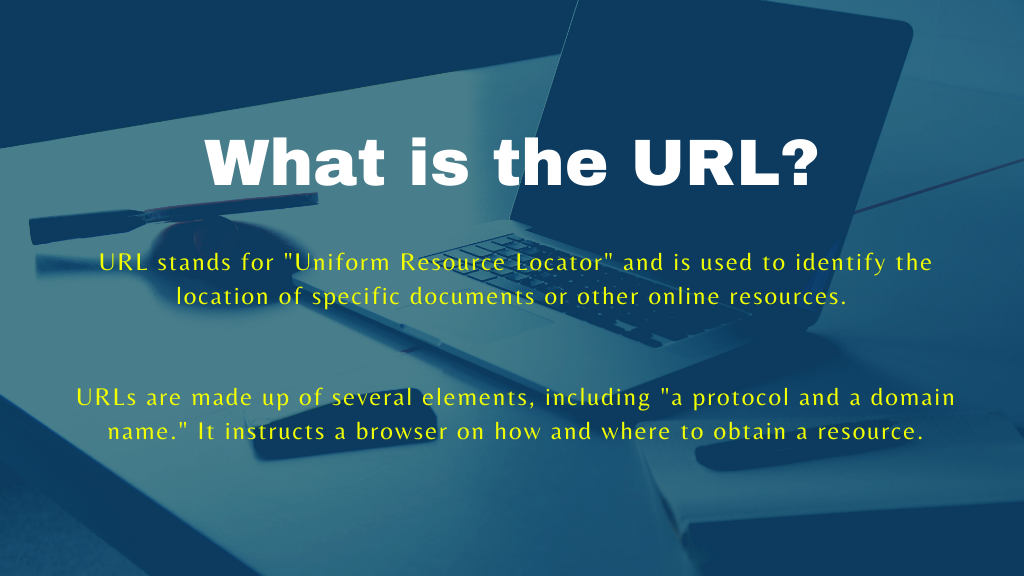
URL stands for “Uniform Resource Locator” and is used to identify the location of specific documents or other online resources. URLs are made up of several elements, including “a protocol and a domain name.” It instructs a browser on how and where to obtain a resource.
Example of URL: https://huntbiz.com/blog/what-is-hyperlink-all-you-need-to-know/
At the site IqueLab and the path /what-is-hyperlink-all-you-need-to-know/, this is an example of a URL that stores content connected to Hyperlinks Together, they make the following URL: https://huntbiz.com/blog/what-is-hyperlink-all-you-need-to-know/
What is the URL structure?

The structure of a URL is the anatomy of how it appears. It usually begins with “http” or “https.” S stands for “https,” which refers to a secure version of a website. The usage of “https” is suggested for a variety of reasons, which you can read about here.
The directory or route where your content is saved, such as https://huntbiz.com/blog/what-is-hyperlink-all-you-need-to-know/ is then followed by www and the name of your domain, such as https://wordpress-729720-4159789.cloudwaysapps.com/blog
3 Important Parts of Website URL:
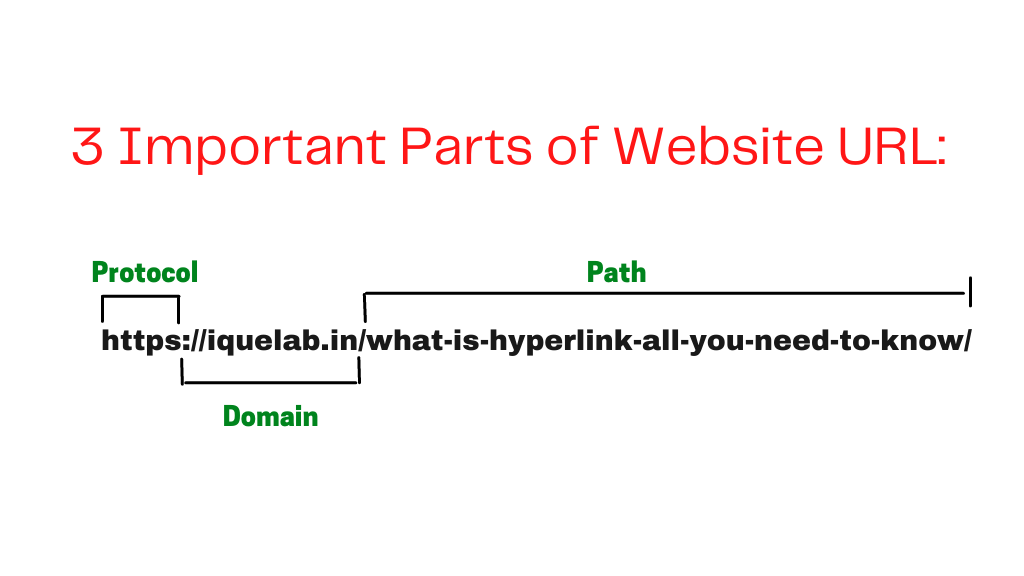
1. The protocol
Consider the following URL: https://huntbiz.com/blog/what-is-hyperlink-all-you-need-to-know/
The first component of this address is the simplest to overlook. You’re probably so used to seeing http:// and https:// at the start of every URL that you don’t think about it. This part, the URL’s ‘protocol,’ is, nevertheless, more significant than you would imagine.
The protocol instructs your browser on how to communicate with the server of a website in order to send and receive data. To put it another way, it’s what makes a URL work in the first place. Most websites have used Hypertext Transfer Protocol (HTTP), and you’ll still encounter this version on the internet.
However, there has been a recent push for Hypertext Transfer Protocol Secure to be widely adopted (HTTPS). While this protocol is similar to HTTP, it is a far more secure option that encrypts data transferred back and forth between the browser and the server. That’s why the majority of browsers display a green security padlock on it:
2. The domain name
The next part is the ‘domain name,’ which is the most recognisable part of a web address. It’s themeisle.com (our website!) in this situation. A domain name is a unique identifier for a website that, if nothing else is added to the end, will usually direct you to the home page.
Consider : https://huntbiz.com/blog/
A domain name, of course, is made up of two smaller components. The website’s name comes first, followed by the TLD (Top-Level Domain) (TLD). The.com,.org, and.net designators (among others) at the end of a domain name are referred to as the latter term.
3. The path
If you just want to look at the first page of our website, all you need is the protocol and the domain name: https://huntbiz.com/blog/. Each page or file on a website, however, has its own URL. Here’s what it looks like once more:
Consider the following URL: https://huntbiz.com/blog/what-is-hyperlink-all-you-need-to-know/
The ‘path’ is the section after the TLD. This is due to the fact that it leads the browser to a certain website page. In this scenario, it takes you to our blog and subsequently to a specific post: What is Hyperlink? All you need to know. The very last component is commonly referred to as a URL ‘slug.’
What is the importance of URL structure in SEO?
You won’t find a URL with an incorrect structure if you carefully examine the SERP results. Either a breadcrumb trail or a suitable URL structure appears in the search results. Every search result has three main components that a user will see. They are:
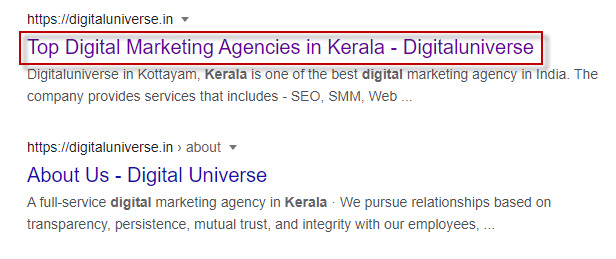
- Title
- URL &
- Description.
We feel that initial impressions are crucial, and search engines such as Google recognise this. A person is more likely to click on a search result if these factors are present. Besides these, there are also other reasons for the importance of URL structure in SEO.
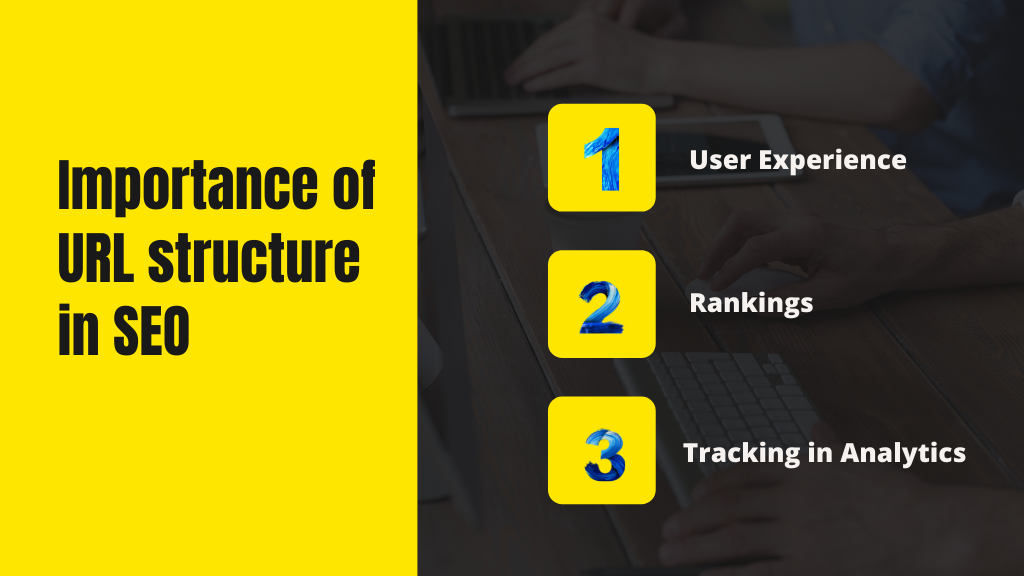
User Experience
Both humans and search engines will be able to understand what the web page is about if the URL structure is appropriate. This increases click-through rates while lowering bounce rates. It shouldn’t have any parameters that aren’t required.
Rankings
URLs play a vital impact in rating a page. Although URLs do not have the capacity to rank themselves, using a keyword in the URL can help the website rank higher and gain more visibility. As a result, it is critical to develop URLs that convey the content rather than simply adding keywords at random.
Tracking in Analytics
It’s critical to understand how well a website’s landing pages are doing. Assume the site you’re monitoring contains tens of thousands of landing pages. It’s easier to figure out which sites are getting the most traffic with a tidy URL structure. By glancing at the landing page, you can see which pages of the website have performed successfully.
SEO friendly URL structure
Make URLs that are simple to grasp, relevant, and accurate to the content. It’s usually a good idea to use a short URL with keywords packed in it. Users and search engines should be able to tell what to expect from URLs simply by looking at them.
Making a URL structure SEO friendly is the greatest approach to keep it tidy. The structure of an SEO-friendly URL must follow a precise pattern that varies based on the type of website. E.g.,
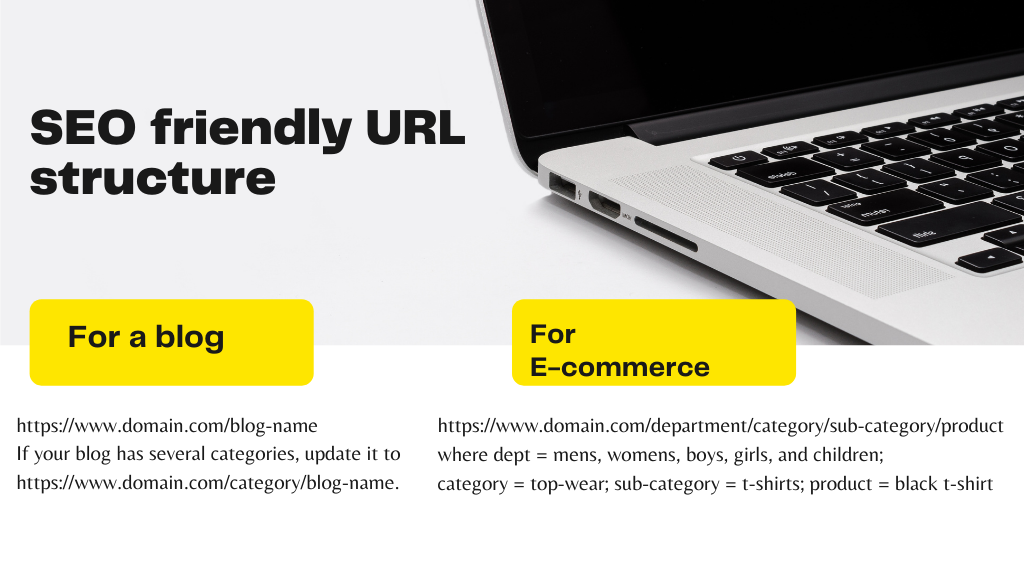
For a blog, the structure could be:
https://www.domain.com/blog-name. If your blog has several categories, update it to https://www.domain.com/category/blog-name.
For E-commerce, it could be:
https://www.domain.com/department/category/sub-category/product where dept = mens, womens, boys, girls, and children; category = top-wear; sub-category = t-shirts; product = black t-shirt
The fight for first place in search engine results pages (SERPs) is fiercer than it has ever been. Because the cost per lead is lower than paid or other channels, businesses invest extensively in Digital Marketing services, particularly SEO services. As a result, when you’re taking care of every technical part of a website, don’t forget about the URL structure.